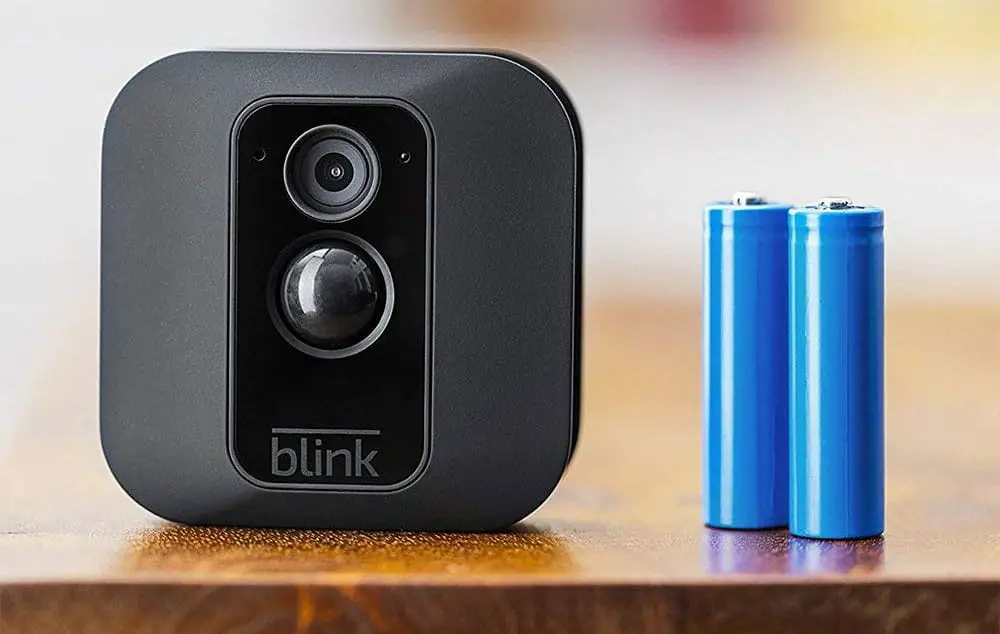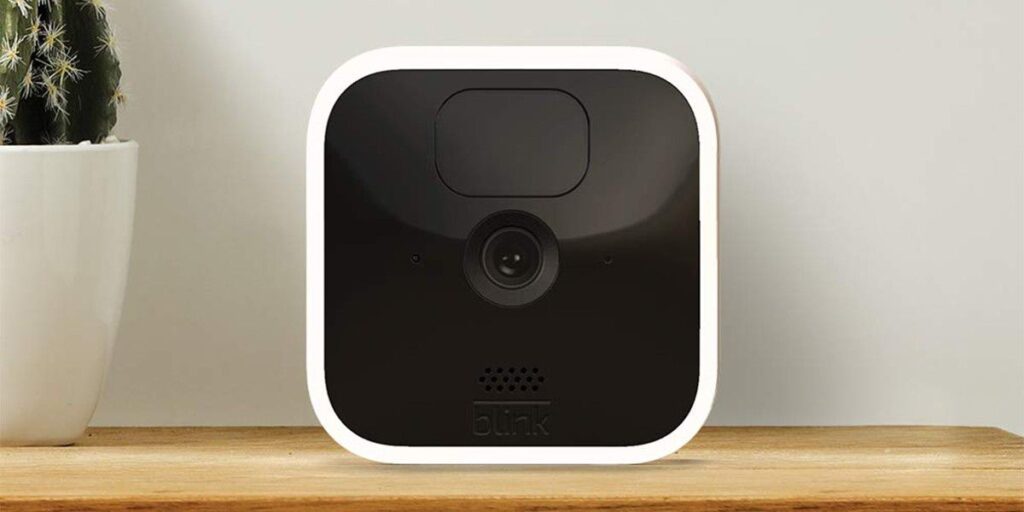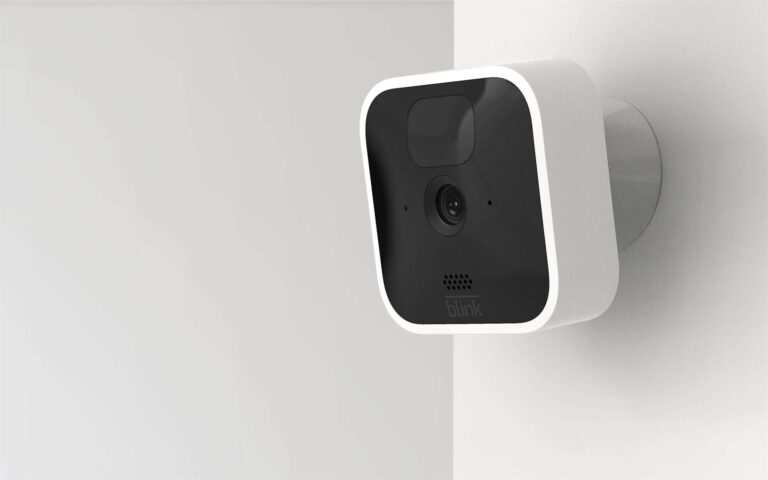Introduction
How Many Cameras Per Blink Module: In the fast-paced world of technological advancements, the field of surveillance has undergone a profound transformation. With increasing concerns about security and privacy, the demand for smarter and more versatile surveillance systems has grown exponentially. One of the key players in this industry is Blink, a renowned manufacturer known for its innovative camera modules.
Traditional surveillance systems include several cameras carefully arranged to cover a large area. The introduction of tiny and affordable camera modules has made Blink popular among consumers for its user-friendly design and wireless connectivity. Despite their small size, Blink modules offer outstanding capabilities, sparking curiosity about their ideal quantity per module.
Additionally, the impact of multi-camera configurations on power consumption and data processing will be examined to understand the balance between enhanced surveillance capabilities and practicality. Furthermore, this study aims to shed light on the versatility of Blink modules in various applications, including home security, commercial surveillance, and industrial monitoring. By comparing different deployment scenarios, the paper will seek to provide valuable insights into how the number of cameras in a Blink module can be tailored to specific needs.

How many cameras can you add to Blink Sync Module 2?
The Sync Module 2 enables you to: Conveniently control all of your Blink devices from the Blink app. Connect up to 10 of any Blink Wired Floodlight, Outdoor and Indoor (all models), XT2, XT, Video Doorbell, and Mini cameras. Support local video storage for up to 10 Blink cameras.
The Blink Sync Module 2 connects 10 Blink cameras. Without additional Sync Modules, this functionality lets users establish a comprehensive surveillance network covering multiple viewpoints and locations.
The Sync Module 2 connects to your home Wi-Fi network and controls Blink camera-mobile app connection. It ensures smooth data transfer and storage, allowing users to view live and recorded video from connected cameras.
Connecting 10 cameras to one Sync Module 2 makes household and small-scale commercial surveillance easy. Cameras can be strategically placed indoors or outdoors to improve property security and monitoring.
Blink’s easy installation and user-friendly design make it accessible to many people. The ability to accommodate many cameras on a single Sync Module speeds up setup and lets users enjoy their monitoring system.
How many cameras come with Blink?
It comes in the box with the Blink Outdoor and Blink Indoor—these two cameras require a Sync Module to run. If you’re using a Blink Mini or Blink Video Doorbell, the Sync Module 2 is an optional upgrade that costs around $35—the same price as the Blink Mini.
Blink offers a variety of home security camera systems, with different product and bundle combinations including different numbers of cameras.
Many Blink camera systems come in single-camera packages or multi-camera bundles. They may sell beginning packages with one or two cameras and a Sync Module. However, they offer larger bundles with three to five cameras to cover a greater area or numerous rooms.
Blink cameras have wireless communication, quick installation, and long battery life. The company strives to make its products easy to use for all tech users.
Over time, Blink may release additional camera types or packages with varying camera quantities, changing the available possibilities. Visit the Blink website or contact customer service for the most accurate and up-to-date information on Blink camera system camera counts.
How many Blink cameras per controller?
Blink states that one Blink sync module can hold a maximum of 10 Blink cameras.
Blink offers a variety of home security camera systems, and the number of cameras included in each package depends on the specific product and bundle chosen by the customer.
It Blink typically offers camera systems in different configurations, catering to varying surveillance needs. Some of the common options include:
Single-Camera Kits: These basic starter kits come with one Blink camera and the necessary Sync Module, which acts as the central hub for communication and data storage. Single-camera kits are ideal for those looking to monitor a specific area or room in their home.
Two-Camera Kits: This package includes two Blink cameras along with the Sync Module. It offers users the flexibility to monitor multiple locations or extend coverage across larger spaces.
Three to Five-Camera Kits: Blink also offers bundles that include three to five cameras along with the Sync Module. These larger kits are suitable for users who need more comprehensive coverage, whether for a larger property or multiple rooms.
Add-On Cameras: Additionally, Blink allows customers to purchase individual cameras separately, allowing them to expand their existing Blink system or customize their surveillance network according to their preferences.
Blink’s cameras are known for their wireless and battery-operated design, making them easy to install and relocate as needed. They are designed to capture high-definition video and offer features like motion detection, night vision, and two-way audio communication.
Can I use Blink on multiple devices?
You can access your Blink account from multiple devices by downloading the app, signing in to your Blink account, and verifying the device/devices using our SMS verification process. Accessible devices include mobile phones, tablets, as well as apps such as IFTTT and Alexa SmartHome.
Yes, you can use Blink on multiple devices, making it a versatile and accessible solution for home security and surveillance. Blink has designed its system to be compatible with various platforms, enabling users to access their cameras and monitor their properties from different devices simultaneously.
Mobile Phones: The Blink mobile app is available for both iOS and Android devices. You can download the app on your smartphones or tablets to view live video feeds, receive motion alerts, and manage camera settings remotely. This portability ensures you can keep an eye on your home even when you’re away.
Web Browsers: Blink offers a web-based interface that allows users to access their cameras from desktop or laptop computers. Simply log in to your Blink account through a supported web browser, and you can view your camera feeds and access various features.
Amazon Echo Devices: Blink integrates with Amazon Echo devices, such as Echo Show and Echo Spot. Using voice commands, you can check camera feeds on your Echo devices, providing a hands-free and convenient way to monitor your home.
Shared Access: Blink also allows you to grant shared access to other family members or trusted individuals. By inviting them to your Blink account, they can use the Blink app on their own devices to access and view the camera feeds.

What is the range of the blink camera module?
Maximum Range of Blink Cameras from the Sync Module
The Sync Module can pair with Blink devices located up to 100 ft away regardless of the direction. But this is only if there are no factors that affect the device’s maximum range.
The range of the Blink camera module refers to the maximum distance between the camera and the Blink Sync Module, which acts as the central hub for communication and data storage. The range is an essential consideration, as it determines the camera’s ability to maintain a stable connection with the Sync Module.
Blink camera modules use Wi-Fi connectivity to communicate with the Sync Module. The range can vary depending on factors such as the construction materials of the building, the presence of obstacles, and the strength of the Wi-Fi signal in the area. In optimal conditions, the range between the Blink camera module and the Sync Module can be up to 100 feet (approximately 30 meters).
The actual range you experience may differ based on your specific environment. Walls, large metal objects, and other electronic devices can interfere with the Wi-Fi signal and reduce the effective range. In situations where the Wi-Fi signal is weak or obstructed, the range may be limited, affecting the camera’s performance and ability to transmit data reliably.
Can I mix and match different camera models on the same Blink module?
Blink offers a variety of camera models, each with its unique features and specifications. While it is generally recommended to use the same camera model for consistent performance and compatibility, Blink does allow users to mix and match different camera models on the same Blink module under certain conditions.
Blink cameras are designed to work seamlessly with their respective Sync Module, which acts as the central hub for communication and data storage. As long as the different camera models you wish to use are compatible with the same Sync Module, you can integrate them into your surveillance system.
However, it’s important to note that mixing camera models may result in some limitations or variations in functionality. The cameras’ features and capabilities may differ, leading to variations in image quality, resolution, field of view, or other specific functionalities unique to each model.
When mixing camera models, consider the following factors:
Compatibility: Ensure that all the camera models you intend to use are compatible with the same Blink Sync Module. Check the manufacturer’s specifications and documentation for the supported camera models.
Performance: Understand that different camera models may have varied performance capabilities. Some models may have higher resolution or enhanced features compared to others.
App Management: The Blink mobile app allows users to manage multiple cameras, regardless of their models, within the same account. However, keep in mind that certain features or settings may be specific to particular camera models.
User Experience: Mixing camera models may lead to variations in user experience, especially if you expect a uniform performance across all cameras. Be prepared for potential differences in video quality or behavior.
Can I use multiple Blink modules to connect more cameras?
The Blink system allows users to use multiple Blink modules to connect more cameras, offering a scalable solution for expanding surveillance coverage across larger areas or multiple locations.
Each Blink module serves as a hub that communicates with and manages the connected Blink cameras. By setting up multiple Blink modules throughout your property or premises, you can create separate camera networks with each module supporting its set of cameras.
This multi-module setup is particularly useful in scenarios where:
Extensive Coverage is Required: If you have a large property or multiple buildings, using multiple Blink modules allows you to extend the coverage and monitor various areas effectively.
Different Locations: You may want to monitor separate locations, such as a home and a business office, using Blink cameras. In such cases, using different Blink modules for each location provides distinct surveillance networks.
Enhanced System Performance: Distributing cameras across multiple Blink modules can help distribute the processing and data load, potentially leading to better overall system performance.
When using multiple Blink modules, it’s important to note the following considerations:
Sync Module Range: Each Blink module has a specific range within which the cameras must be located for stable communication. Ensure that the cameras are within the designated range of their respective modules.
App Management: The Blink mobile app allows users to manage multiple Blink modules and their associated cameras from the same account. You can switch between camera networks seamlessly using the app.
Power and Connectivity: Each Blink module requires its power source and Wi-Fi connectivity. Plan the placement of modules to ensure adequate power supply and strong Wi-Fi signal.
Sync Module Naming: To distinguish cameras connected to different modules, you can assign custom names to the Blink Sync Modules during setup.
How far can the cameras be from the Blink module?
The maximum distance between the Blink cameras and the Blink Sync Module, also known as the range, is approximately 100 feet (approximately 30 meters) in an optimal open-air environment. However, the effective range can vary depending on various factors, such as the construction materials of the building and the presence of obstacles that can interfere with the Wi-Fi signal.
In real-world scenarios, the range of the Blink cameras from the Blink Sync Module can be influenced by the following factors:
Walls and Obstructions: Walls, doors, and other obstacles can impair the camera-Sync Module Wi-Fi communication. The range may decrease as the signal passes through more obstructions.
Wi-Fi Signal Strength: The strength of your Wi-Fi network plays a crucial role in determining the range of the Blink cameras. A strong Wi-Fi signal will allow for a more extended range, while a weaker signal can limit the distance the cameras can be from the Sync Module.
Interference: Other electronic devices operating on the same frequency as your Wi-Fi network can cause interference and impact the camera’s range.
To optimize the range and performance of your Blink cameras, consider the following tips:
Position the Blink Sync Module in a central location, preferably near your Wi-Fi router, to maximize coverage and signal strength. Ensure there are minimal obstructions and interference sources between the cameras and the Sync Module.
For larger properties or areas with weak Wi-Fi coverage, consider using Wi-Fi extenders or mesh networks to enhance the Wi-Fi signal range. Blink’s wireless and battery-operated design makes it convenient to place cameras in various locations within the effective range of the Sync Module.
By taking into account the environmental factors and implementing best practices for Wi-Fi connectivity, you can ensure optimal performance and reliable communication between the Blink cameras and the Sync Module.

Conclusion
The research unveiled that the number of cameras in a Blink module plays a pivotal role in shaping the overall efficiency and effectiveness of surveillance systems. Through a comprehensive analysis, it became evident that a balanced approach is essential when considering the quantity of cameras. While adding more cameras can significantly expand the coverage area and improve monitoring accuracy, it also leads to increased power consumption and data processing requirements. As such, striking a balance between coverage and practicality is crucial in maximizing the benefits of Blink modules.
Moreover, the study highlighted the adaptability of Blink modules to various applications. For smaller spaces or residential environments, a single camera module might be sufficient to meet security needs effectively. Conversely, complex commercial or industrial settings often necessitate multiple cameras to ensure comprehensive coverage. The field of view and resolution of the cameras within the Blink module are integral factors to consider when deciding the optimal number.
Higher-resolution cameras offer better image clarity, but they also generate more data, potentially overburdening the system if not managed properly. There is no one-size-fits-all answer to the question of how many cameras per Blink module are ideal. Instead, the decision should be guided by the specific surveillance requirements of the environment and the intended use. By carefully considering factors such as area coverage, image quality, power consumption, and data processing capabilities, consumers and businesses can tailor their Blink module configurations to meet their unique needs effectively.

